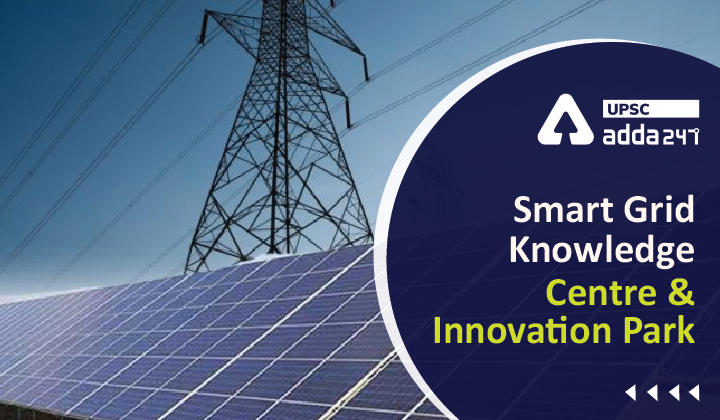Table of Contents
Smart Grid Knowledge Center: Relevance
- GS 3: Infrastructure: Energy, Ports, Roads, Airports, Railways etc.
Smart grid technology in India: Context
- Recently, Ministry of Power has launched a virtual Smart Grid Knowledge Center (SGKC) and Innovation Park as part of Azadi ka Amrit Mahotsav Programme.
Smart Grid Knowledge Center: Key points
- The Virtual SGKC has been conceptualized and developed by POWERGRID with support from the Ministry of Power and technical assistance from USAID.
- SGKC aims to be one of the leading Centers of Excellence globally to foster innovation, entrepreneurship and research in smart grid technologies and create capacities in the power distribution sector.
- The Virtual SGKC enables a digital footprint of the physical setup of SGKC, the need for which was felt during COVID-19 pandemic.
- The platform presently hosts more than 50 solutions from over 30 technology partners across 8 thematic areas spanning across new and advanced technologies such as artificial intelligence, machine learning, blockchain, IOT, etc.
What is smart grid technology?
- A smart grid is an electricity network based on digital technology that is used to supply electricity to consumers via two-way digital communication.
- Smart grid allows for monitoring, analysis, control and communication within the supply chain to help improve efficiency, reduce energy consumption and cost, and maximize the transparency and reliability of the energy supply chain.
- The main objective behind the introduction of smart grid is to overcome the weaknesses of conventional electrical grids by using smart net meters.
Features of smart grid
- Real time monitoring.
- Automated outage management and faster restoration.
- Dynamic pricing mechanisms.
- Incentivize consumers to alter usage during different times of day based on pricing signals.
- Better energy management.
- In-house displays.
- Web portals and mobile apps.
- Track and manage energy usage.
- Opportunities to reduce and conserve electricity etc.
Smart grid benefits
- Reduction of T&D losses.
- Peak load management, improved QoS and reliability.
- Reduction in power purchase cost.
- Better asset management.
- Increased grid visibility and self-healing grids.
- Renewable integration and accessibility to electricity.
- Increased options such as ToU tariff, DR programs, net metering.
- Satisfied customers and financially sound utilities etc.
Read current affairs for UPSC





 TSPSC Group 1 Question Paper 2024, Downl...
TSPSC Group 1 Question Paper 2024, Downl...
 TSPSC Group 1 Answer key 2024 Out, Downl...
TSPSC Group 1 Answer key 2024 Out, Downl...
 UPSC Prelims 2024 Question Paper, Downlo...
UPSC Prelims 2024 Question Paper, Downlo...




